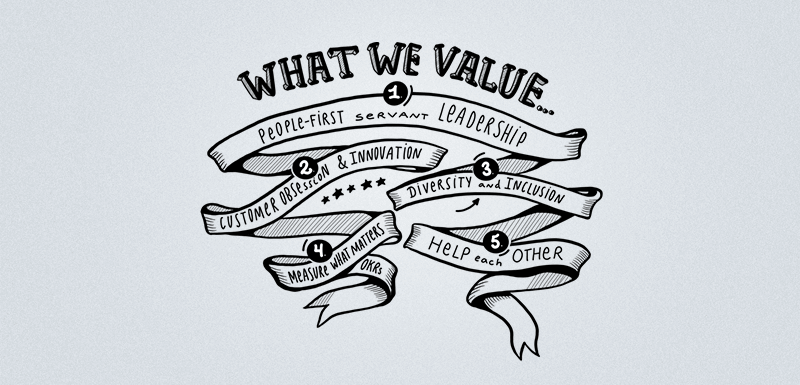In today’s digital economy, infrastructure has evolved from your organization’s technical foundation to a strategic asset that can make or break your business outcomes. Yet, as companies embrace hybrid environments, many find themselves struggling with a critical challenge: how to maintain control and visibility across increasingly complex infrastructure landscapes and AI workloads.
What’s driving this complexity? It’s the sort of thing we’re all experiencing so quickly that we might miss it. The rapid expansion in AI infrastructure, the accelerated adoption of open-source technology, and the increasingly pervasive presence of cloud-native software providers make a challenging job even more daunting. And that doesn’t include changes in customer buying behavior, regulatory requirements, and cyber threats. All these things and more continue to introduce new layers of complexity in achieving complete visibility across on-premises, colocation, and cloud estates.
The Hidden Costs of Infrastructure Complexity
Consider this scenario: Your team manages a mission-critical application that suddenly experiences performance issues. Your numerous monitoring tools show dozens of alerts across multiple systems. Which one is the real problem? How long will it take to find out? And most importantly—how much is this costing your business every minute?
What used to be a technical problem is now a business problem that impacts:
- Customer satisfaction and retention
- Revenue and growth opportunities
- Operational efficiency and costs
- Team productivity and morale
- Innovation capacity and speed
Beyond Traditional Monitoring: The Need for Deep Observability
Traditional monitoring tools often create more noise than insight. They generate alerts but don’t provide context. They show symptoms but can’t identify root causes. They tell you something is wrong but can’t help you fix it. While some may offer basic AI functionality, they often fall short of the capabilities needed to effectively manage today’s complex environments and AI-powered workloads.
This is where deep observability changes the game.
Transforming Infrastructure from Liability to Strategic Asset with AI-Powered Observability
The launch of Virtana Platform represents a fundamental shift in how organizations can manage their hybrid infrastructure (click here to read the press release). Deep observability enables actionable insights into every part of the infrastructure, ensuring IT teams can proactively manage and support demanding AI workloads and hybrid estates. Instead of piecing together partial views from multiple tools, teams now have an AI-based single source of truth that provides:
1. Proactive Issue Prevention
- AI-driven early warning system identifies potential problems before they impact business services
- Automated root cause analysis (RCA) eliminates hours of manual investigation
- Self-healing capabilities reduce mean time to resolution (MTTR) from hours to minutes
2. Operational Efficiency at Scale
- Consolidated visibility eliminates tool sprawl and reduces operational overhead
- Policy-based noise reduction ensures teams focus on what matters
- GenAI-powered natural language querying with Virtana Copilot makes complex infrastructure easy to navigate
3. Strategic Resource Optimization
- AI-powered recommendations identify cost-saving opportunities for cloud and on-premises environments
- Capacity planning prevents overprovisioning while ensuring performance
- Comprehensive topology mapping enables informed architectural decisions
Real Business Outcomes
Early adopters of Virtana Platform are already seeing transformative results:
- 75% reduction in MTTR, as experienced by a healthcare provider managing critical AI diagnostic applications
- 30% decrease in infrastructure costs, realized by a global financial firm balancing on-premises and cloud resources for AI processing
- 60% improvement in team productivity, achieved by a leading electric vehicle manufacturer relying on AI-driven insights
- 90% reduction in false positives, benefitting one of the largest insurance organizations leveraging AI for risk assessment
The Path Forward: From Reactive to Proactive
Organizations can’t afford to be reactive about their infrastructure in today’s competitive landscape. The cost of downtime, the impact of poor performance, and the overhead of manual operations all directly affect bottom-line results.
Deep observability isn’t just about seeing more—it’s about understanding accurately. It’s about turning infrastructure from a cost center into a competitive advantage. It’s about enabling your teams to focus on innovation instead of firefighting.
Taking Action
As you evaluate your infrastructure management strategy, consider these key questions:
- How much time does your team spend investigating issues versus preventing them?
- What is the business impact of your current mean time to resolution (MTTR), especially when AI workloads are involved?
- How confident are you in your infrastructure’s ability to support future growth and AI adoption?
The answers to these questions often reveal significant opportunities for improvement—opportunities that deep observability can help you capture.
Conclusion
The launch of Virtana Platform marks a pivotal moment in infrastructure management. By providing deep observability across hybrid environments, it enables organizations to transform their infrastructure from a complex challenge into a strategic asset.
In an era where digital transformation is no longer optional, having clear visibility and control over your infrastructure isn’t just an IT priority—it’s a business imperative.
Virtana Insight




